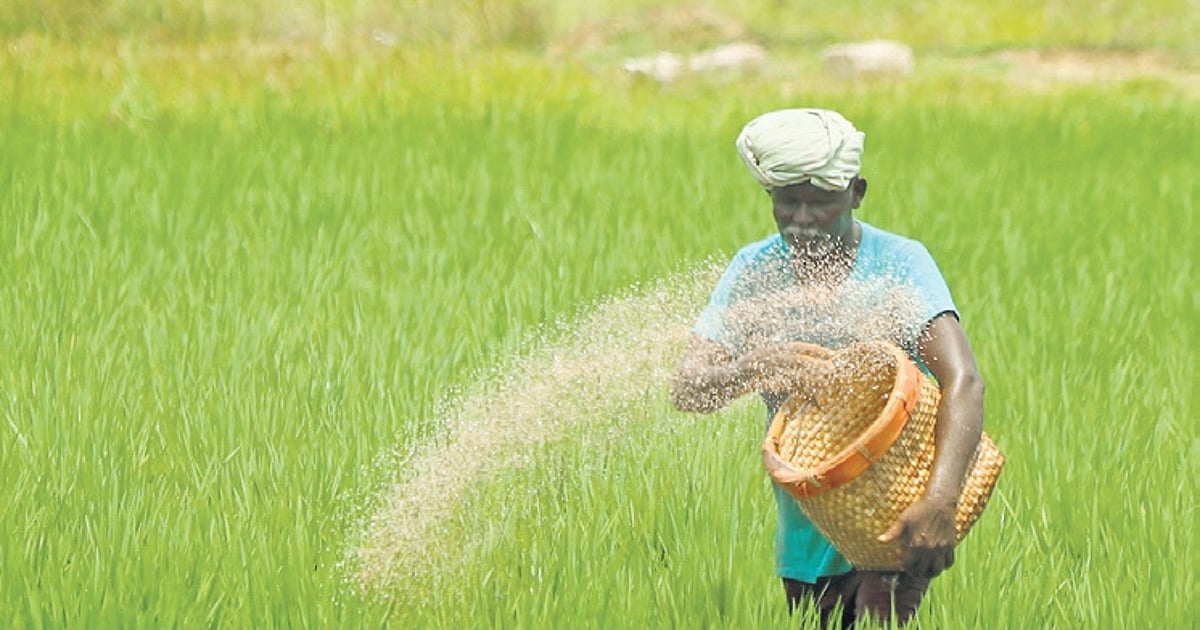 |
|
The article critiques India's 2025 budget allocation for agriculture, arguing that the current levels are insufficient to address the nation's long-term food security and economic growth. While acknowledging the government's recognition of agriculture as a primary engine of growth, the author points out significant flaws in existing support schemes. The existing programs, including crop insurance, interest subsidies (PM-KISAN and MISS), are deemed inadequate because they fail to ensure farmers receive fair prices for their produce, thereby hindering their ability to invest and manage risk. A significant portion of the budget is allocated to these programs, despite their limited effectiveness in empowering farmers to compete in the market. The author highlights that the average Indian farmer operates with limited capital, making them vulnerable to exploitation by large corporations and informal lenders. Consequently, the current support mechanisms do not sufficiently address the fundamental economic realities faced by the farming community.
The author underscores the inadequacy of the budget's resource allocation. Despite a growth in the population supported by the agricultural sector (due to post-pandemic rural migration), the budget increase for agriculture since 2018-19 has been a mere 6.8% annually, barely exceeding general inflation. Even when considering the combined allocation for agriculture and rural development, the growth rate remains low (7.6%). The proposed budget for FY 2025-26 for the Ministry of Agriculture, including research and education, is actually lower than the current year’s allocation by 2.54%, a figure that doesn't account for inflation. Furthermore, the planned expenditure growth for rural development is only 8%, further highlighting the insufficient investment in a sector crucial to the nation's well-being. The lack of detailed information about the allocation for the Dhan-Dhaanya Krishi Yojana (PM-DDKY), a program focused on low-productivity districts, raises additional concerns about transparency and effectiveness.
A crucial point raised by the article is the lack of long-term vision in agricultural investment. The author advocates for a more forward-looking approach that anticipates future food demands and ensures consistent public services for the farming community. This approach is crucial to avoid reliance on imports and reactive trade policies. The example of pulse production is cited; the cyclical pattern of production shortfalls highlights the detrimental effects of inconsistent investment. The demand for pulses, fruits, and vegetables is projected to rise with increasing incomes, yet the budget allocation fails to anticipate and proactively address this foreseeable demand surge. Additionally, the article stresses the urgent need for investment in climate change adaptation technologies within the agricultural sector. This is a critical area where neither farmers nor the private sector possess the capital or expertise to invest independently. Simple measures such as crop insurance subsidies are deemed insufficient; the author calls for a dedicated mission aimed at protecting the agricultural sector from the impact of climate change, thus guaranteeing long-term food security.
In essence, the article presents a strong case for a significant increase in India's agricultural budget. The author argues that the current policies and resource allocation are inadequate to support the farming community, address the challenges of climate change, and ensure food security for a growing population. The lack of investment is not merely a matter of insufficient funding but also reflects a shortsighted approach to agricultural policy. A holistic and sustained investment strategy, encompassing improved market access for farmers, infrastructure development, and climate resilience measures, is vital for promoting sustainable growth and ensuring India's long-term agricultural prosperity.
Source: Budget 2025: Why we must invest more in agriculture today to solve tomorrow's problems
